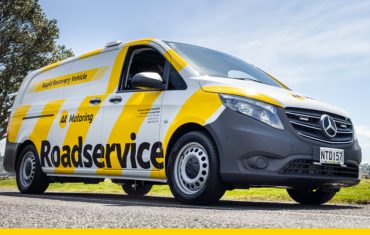
These vehicle use policies will reduce vehicle fleet costs
Fleet ManagementWhen was the last time you reviewed your vehicle policies? Maybe your policies are outdated, or they fail to focus on cost and efficiency. You could be missing a chance to save some cash.
Getting your vehicle policies right is key to efficient vehicle fleet use. And not thinking through how your business makes use of vehicles is a great way to waste money.
We recently looked at the importance of thinking “mobility” first in determining vehicle needs and use. Now let’s think about how that approach translates into improved vehicle use policies.
What are Vehicle Use Policies?
Best to be clear exactly what we mean by vehicle policies:
“A company vehicle policy, or company vehicle use agreement, establishes which employees are eligible for a company fleet vehicle, requirements for qualifying for a company car, basic rules employees must follow when using company vehicles, and disciplinary action for misusing vehicles.”
Your approach to vehicle use underpins these policies. And getting it right will save you money.
The NZTA offers some great guidance here. They set a framework for efficient fleet management.
- Reduce the amount of travel
- Improve the efficiency of travel
- Reduce the cost per kilometre of travel
Reducing the amount of travel
Let’s look at some approaches to reduce the amount of time on the road.
Monitor the amount and nature of vehicle use
Unless you have an in-depth knowledge of how your vehicles are used you won’t be able to make a call on whether it is necessary or not.
Technology is your friend here. Telematics makes it easy to keep track of vehicle use and identify unnecessary trips.
- Policy: all vehicle use must be recorded.
Minimise vehicle use
NZTA recommends auditing business travel to identify unnecessary use and offers a trip decision-making process. It’s all too easy to hop in a car without really considering whether the trip is necessary.
Develop a culture where car use is considered carefully. Maybe a vehicle isn’t the most cost-efficient way to make a trip. Consider alternatives like picking up the phone or asking a driver to drop off the parcel close to where they are going rather than make a special trip.
- Policy: all vehicle use must meet a necessity-test related to your business’ needs.
Review vehicle eligibility rules
Reducing the number of vehicles in your fleet is often top of lists of ways to reduce vehicle fleet costs. This is where you make use of the data you have collected about vehicle use and assess who needs vehicles and how many vehicles you really need.
Company vehicles senior staff don’t use between the time they arrive at work to the time they head home an opportunity to save on pool car use.
Maybe exclusive use of vehicles for staff – except those for whom a vehicle is an essential resource that allows them to do their job – is an extravagance you can’t afford.
- Policy: vehicle eligibility should be determined very carefully.
Embrace communications technology
Is vehicle use related to getting to and from meetings? How much of this use is necessary? Are your team logging a lot of miles checking equipment or monitoring its performance? How much of this use is strictly necessary?
Sometimes there is no substitute for face to face meeting or being on site. But, with 5G on the way, the internet of things spreading and an ever more interconnected world, a lot can be achieved without leaving your desk.
- Policy: web-based communication should be used when possible.
Improve the efficiency of travel:
You’ve determined whether vehicle use is necessary. Now it’s important to get from a to b in the most efficient way.
Plan your travel effectively, considering all costs
Are you planning your travel effectively? Booking ahead where possible to avoid last minute fares or expensive car trips? Combining client visits efficiently to avoid multiple trips to one destination?
Maybe the ability to get some work done on the train outweighs the convenience of taking a vehicle… Maybe a park and ride is the best way to get to those central city visits.
- Policy: vehicle use should be the best option, all costs considered.
Ensure routes are planned effectively
It’s easy to get into routines when it comes to routes you take or simply stick to what you know. But effective monitoring of vehicle use is likely to reveal opportunities to spend less time or save kilometres getting your vehicles where they need to be.
Changes to roads or traffic flows shouldn’t be ignored when it comes to route planning. And another stop should never be added on to a route where it really requires the route to be re-thought.
- Policy: review routes constantly.
Reduce the cost per kilometre of travel
You’ve minimised vehicle use and ensured your trips satisfy an efficiency test. Now it’s time to make sure that you minimise your vehicles’ cost per kilometre.
Choose the right vehicles for the job
Vehicle choice is key to minimising trip costs. We know it’s hard but it’s important to resist the urge to get the more powerful model, unless you can justify it to the lovely people in finance.
Understanding the total cost of ownership is essential when it comes to vehicle choice. Choosing that more powerful model might not cost a lot more in lease costs. But that extra fuel consumption might really hurt in the long run.
We urge you to embrace new technology in this context too.
Take a look at some 2019 vehicle options we reviewed you’ll see a lot of EVs and hybrids because the running costs of these vehicles offer huge savings over purely-petrol alternatives.
- Policy: vehicles should be fit for purpose and offer minimum running costs.
Train your drivers to minimise the cost of their vehicle use
The ways vehicles are driven makes a big difference to your costs per kilometre. Train everyone who uses your vehicles to drive in a way that minimises running costs.
Anyone who has kept an eye on fuel use over a long trip knows more speed means more dollars per kilometre. But the impact of driver behaviour on fuel costs don’t stop there. The US EPA has determined that drivers can affect fuel efficiency by as much as 33%.
Aggressive acceleration, hard braking, excessive speed through corners, etc. It all incurs a cost in fuel consumption or wear and tear on your vehicles.
By way of contrast good driver behaviour — like keeping tyres properly inflated, driving smoothly, minimising idling and avoiding air conditioner use around town — can offer significant savings.
- Policy: set clear driver responsibilities based on running cost minimisation.
Ensure vehicles are well maintained
Keeping your vehicles serviced and addressing issues quickly is an important way to minimise running costs.
Most new vehicles come with a warranty and or servicing commitment and your lease could also include a servicing component. But that doesn’t mean you don’t need to ensure your drivers consider servicing and maintenance.
Neglecting a service or failing to address an issue with a vehicle quickly can be costly in anything from fuel efficiency to replacement vehicle costs, when a vehicle is off the road. And a lack of care can cost you in excess wear and tear charges for leased vehicles.
- Policy: set clear driver vehicle maintenance responsibilities.
Setting vehicle policies to minimise fleet costs
Whether you have two vehicles or 200, it is important that your vehicle policies are designed to help you minimise your vehicle fleet costs.
Need help refining your vehicle policies and minimising vehicle costs? Talk to our experienced consultants today.
 Driving Insights
Driving Insights




